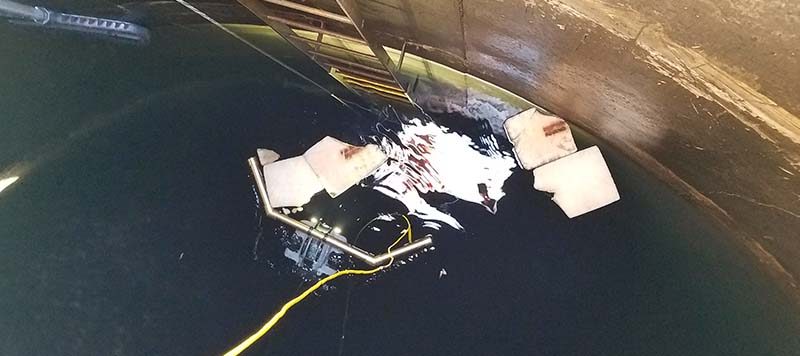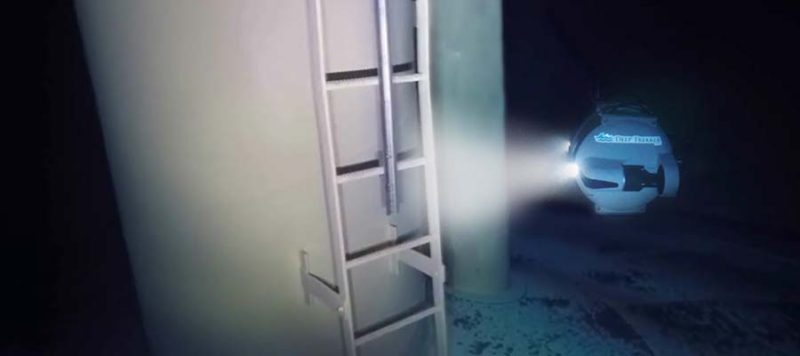A Remotely Operated Vehicle, or ROV, can play an important role in the field of commercial diving and submerged infrastructure. ROVs assist with water tank inspections and underwater structures for damage or corrosion and to evaluate the environment for potential risks.
Challenges Associated with Water Tank Inspections

We rely heavily on potable water tanks across a wide range of industries, including oil and gas and onshore energy. Providing water for industrial applications and for the use of clean drinking water is a vital component of life, however, managing this can be a dangerous and costly task. A common way to perform inspections is to drain the tank and hire commercial divers to perform close-up inspections, although this often presents hazards due to confined space. Tanks are then cleaned or treated if necessary, and refilled. This method can take the tank offline for up to three days, or longer if further treatment is required.
Risks of Neglecting Water Tank Inspections
When water tanks are not inspected or maintained within the time frame recommended, the tank begins to harbour a number of contaminants, including chemical, microbial and excessive debris or sediment. This poses a major risk to human health and to the integrity of the tank.
ROVs and their Role in Water Tank Inspections

ROVs have the potential to improve the traditional approaches taken to water tank inspections. Deep Trekker ROVs provide the
following benefits:
- Using a ROV removes the risks associated with confined space entry, which often requires permits, planning and paperwork
- An operator is able to perform water tank inspections with a ROV without having to discharge or refill the tank
- Video footage and imagery can be kept following an inspection to identify the issue immediately and to inform better planning in the future
- ROV footage offers detailed, close-up views necessary to inspect a tank’s internal condition
- Deep Trekker offers custom add-ons and enhanced features such as grabber arms that can capture samples from the inside of a tank
More about Deep Trekker ROVs
With no generator required, you can complete all of your inspections from the launch site on top of the water tower, or remotely from your inspection vehicle. The digital video recorder documents your inspection, including depth, water temperature, and heading (applicable to the
DTG2 Smart and
Worker packages) to include in documentation and reports.
- Up to 300 meters depth rating
- Up to 8 hours of battery life
- 700 TVL to 4K HD Camera
- Industry and application specific add-ons
However you choose to conduct your tank inspections, it is vital to ensure that your
methods follow best-practice and are established with longevity and the safety of your systems and people.
To explore the potential benefits of tank inspection services and for guidance on the usage of Deep Trekker ROVs, contact us today > sales@deeptrekker.com

